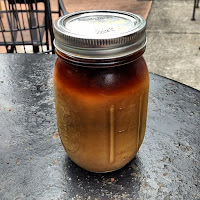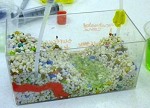Whether you’re going to a costume party or staying at home watching scary movies, here are 5 tricks to make this Halloween a treat for the Earth.
1) Use the whole pumpkin. Jack-o-Lanterns are a favorite part of many people’s Halloween. By buying from a local pumpkin patch, you are reducing the amount of time and effort it takes to transport the pumpkin to the store. That saves water! Try roasting the seeds for a salty snack or using the innards to make pumpkin pie. And once Halloween is all over, you can put your pumpkin in the compost.
 2) Instead of regular candy, hand out treasures! Treasures can be little trinkets like seed packets or items made from recycled materials that will last longer than one night and can help reduce packaging waste. Can’t give up your sweet tooth? Instead of buying your Halloween candy at a store, buy it from a group that is raising money to support an amazing cause.
2) Instead of regular candy, hand out treasures! Treasures can be little trinkets like seed packets or items made from recycled materials that will last longer than one night and can help reduce packaging waste. Can’t give up your sweet tooth? Instead of buying your Halloween candy at a store, buy it from a group that is raising money to support an amazing cause.3) DIY your Halloween decorations! Frannie has shown you in previous blogs some ways to make cool Halloween decorations out of materials you can easily find in your house. Even better, you can recycle or reuse them after you’re done!
 4) Help your candy wrappers rise from the dead! If you’re really crafty, you can take your used candy wrappers and make cute barrettes, hair bows, and broaches. For a simpler option, send your candy wrappers to Terracycle’s Candy Wrapper Zero Waste Box. There, candy wrappers are repurposed and used to make notebooks, tote bags, and much more.
4) Help your candy wrappers rise from the dead! If you’re really crafty, you can take your used candy wrappers and make cute barrettes, hair bows, and broaches. For a simpler option, send your candy wrappers to Terracycle’s Candy Wrapper Zero Waste Box. There, candy wrappers are repurposed and used to make notebooks, tote bags, and much more.5) Costume-swap with your friends! Did you know that it takes 713 gallons of water to make a single cotton t-shirt? Many Halloween costumes are made up of multiple pieces and most costumes will only be worn once and then thrown away. Save water (and time and money shopping for costumes) this year by swapping costumes with your friends or jazz up last year’s costume with some new accessories!
Have a Green Halloween!
















